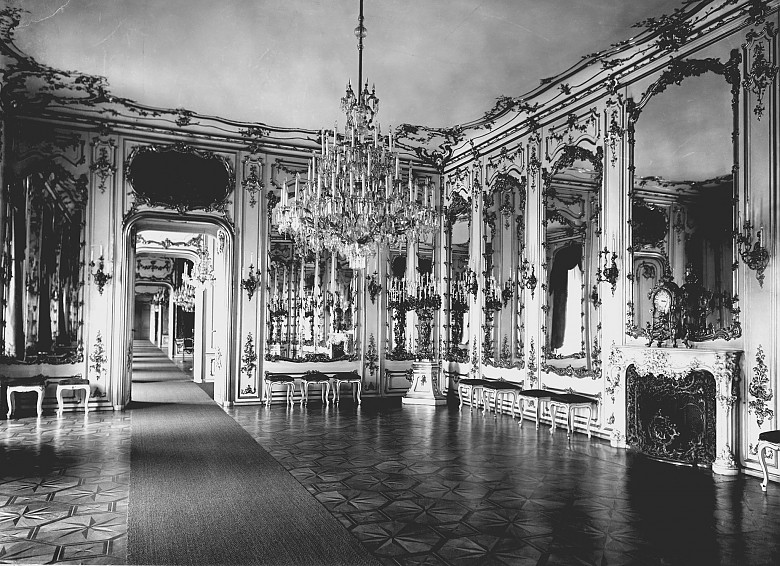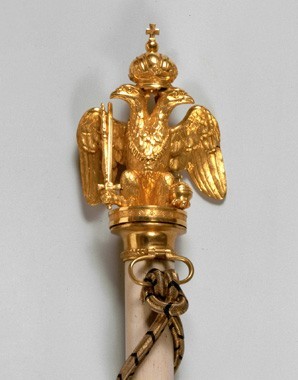On the 'Empress’s side' – women at Court
During the Baroque era the empress’s court, though nominally subordinate to the emperor, was a system in its own right. The female sphere was called the ‘Frauenzimmer’, a term which denoted both the women’s apartments and their occupants. The women’s court was smaller in terms of numbers but was structured in a similar way to that of the emperor and similarly characterized by strict hierarchies.
From: Johann Christian Lünig, Theatrum Ceremoniale Historico-Politicum, Leipzig 1719/20 (part I, 301); quoted from Keller, Hofdamen, 126Their service is fatigant [tiring], for they live an irregular life, having to stand for a long time, sometimes the whole day long in laced and stiffened gowns, are given cold food and go to bed late. In short, even if they are beautiful, once they have been in service for a time they become plain on account of the irregular life they lead.
The empress’s apartments in the Leopoldinischer Trakt of the Hofburg were virtually a mirror image of the emperor’s suite of rooms and comprised two antechambers, an audience room and the magnificent Mirror Room which served as a reception room for high-ranking visitors. The innermost chambers including the bedroom were shared by the imperial couple as their Retirade or retreat.
At the head of the women’s court was the Obersthofmeisterin, a widow of noble birth, usually advanced in years, who had to be experienced in running a large household. As the confidante of the empress she had unlimited access to the innermost chambers. She was assisted by the empress’s (male) Obersthofmeister, who represented the household to the outside world. This corresponded to the division of roles between the genders in the early modern period, when the woman as ‘matron of the house’ ruled over the household while the man assumed the role of protector of the reputation of the house in the outside world.
The empress’s household also included the wives of high-ranking Court officials who as Ehrendamen (‘ladies of honour’) formed her entourage but did not perform any concrete duties.
The female counterparts to the emperor’s chamberlains were the Hofdamen (ladies-in-waiting) and Kammerfrauen (ladies of the chamber). When the emperor appeared at the empress’s side at dinner – in this case the atmosphere was less formal, so that visitors could dine at the same table as the emperor – it was the Hofdamen who served the food. Aged between 15 and 25, they had to be of noble birth and unmarried, and could only remain in Court service until they were married. Frequented by the nobility from all over the Empire, the Court had an important function as a marriage market.
Hoffräulein (‘maids-in-waiting’) on the other hand were sent to Court while still children, in order to be educated in cosmopolitan deportment and courtly conversation by taking part in life at Court. Together with female religious institutions, the Court was one of the only places where girls of noble birth could receive an education outside the parental home. A Frauenzimmerhofmeisterin acted as a governess and assumed responsibility for the girls’ education, while the imperial couple acted as their guardians and representatives of their parents.
Everyday life in the women’s court was far less glamorous than might be imagined: the women and girls lived more or less in seclusion to protect their moral integrity; they were under constant observation and were not permitted to leave the women’s apartments on their own. As soon as the empress emerged from her inner chambers they had to accompany her, a duty that involved a great deal of standing around and waiting. In general they had little time to themselves and were forced to share the interests and inclinations of their imperial mistress, for better or worse.















